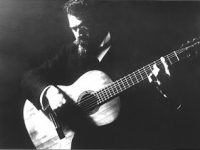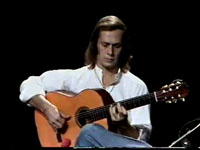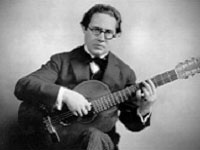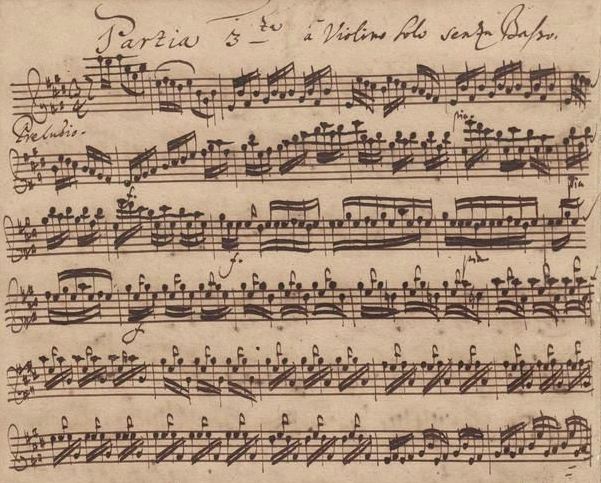Ophira Zakai, lute
Francesco Spinacino/Josquin – Adiu mes amours.
Ophira Zakai – 6 course Renaissance Lute (made by Marcus Wesche).
Recorded in Maria Magdalenen Church, Hamburg, Germany, August 2011.
















Francesco Spinacino/Josquin – Adiu mes amours.
Ophira Zakai – 6 course Renaissance Lute (made by Marcus Wesche).
Recorded in Maria Magdalenen Church, Hamburg, Germany, August 2011.
From the suite in A minor by Paul Charles Durant for baroque lute. Durant lived in the mid 18th century and was one of the last composers for the lute prior to the Classical period. Daniel Shoskes performs on a Rutherford 13-course baroque lute.
Great guitar playing. Here’s a guy who loves the sound of a guitar:
Composed and performed by Marek Pasieczny.
“After many years of composing highly advanced pieces both technically and musically demanding, I felt the need to write something considerably simpler in form and language. This composition was bent on the idea of creating something not only for professional guitarists, but also for those still studying at secondary school level.”
“Little Sonata (titled inspired by Paul Hindemith’s “Kleine Sonate” for cello and piano) is an easy four-movement short composition, leaning on the form of the sonata and kept in the tonal post-classical and neo-romantic language. It was inspired by the cycle for solo piano Impromptus Op . 9 by Franz Schubert.
“Written entirely on the piano and later ‘adapted’ for the guitar — it explains the highly pianistic chordal structures and harmonies that dictate the structure of the whole work. It was nevertheless composed with simplicity and ease for the guitar in mind.” –Marek Pasieczny
I happened to have a camera with me in Portland the other day and I heard some music coming from Pioneer Square.
His name is Andrew Gorny. He said it was ok to record and post his performance on YouTube. This is my first YouTube upload! I recorded it with a little Canon S95
pocket cam. Not a bad camera.
I can see myself doing a lot more of this with such a nice little camera to keep in my pocket. Next time I won’t move it around quite so much while I’m recording.
 Bach wrote this for the violin, then he arranged it for the lute, which gave us all a great model to work from when we want to adapt Bach to the guitar. But here we hear the violin version brought straight over to the mandolin, with none of the additional bass notes of the lute version.
Bach wrote this for the violin, then he arranged it for the lute, which gave us all a great model to work from when we want to adapt Bach to the guitar. But here we hear the violin version brought straight over to the mandolin, with none of the additional bass notes of the lute version.
Why am I posting a mandolin video on a guitar blog? Well, I was tripping around YouTube listening to Bach here in the wee hours of the morning and I happened to find this brilliant bit of video on Thile, whom I’d never heard before. That led me to more videos from Thile, and in one of them he has some advice for guitarists wanting to cross over to the mandolin. At one point, while discussing the technical challenges, he drops a great bit of advice to guitarists. He says, “Don’t play the guitar — play music!”
Then I remembered this isn’t a mandolin video after all….
A great look at the two giants, Julian Bream and John Williams, having a very fine time playing in one of Bream’s favorite spots, Wardour Chapel in Wiltshire, England, in 1979.
If you’ve been around the classical guitar world very long, you’ve heard lots of generalizations about these two. Popular opinion has it that Bream is the creative genius, while Williams is the supreme technician. Bream the Dionysian, Williams the Apollonian.
In this video we can see why people say such things. The contrast between them is striking.
But to stop there, with the easy observation, is to miss the best part of their gift to us.
What’s wonderful is the way their differences bring out the best in both. A beautiful and unexpected chemistry occurs.
As Williams himself said of the duo, “Although the way we each play is alike as chalk and cheese, we’re not two musicians, we’re an ensemble and we create magic together.”